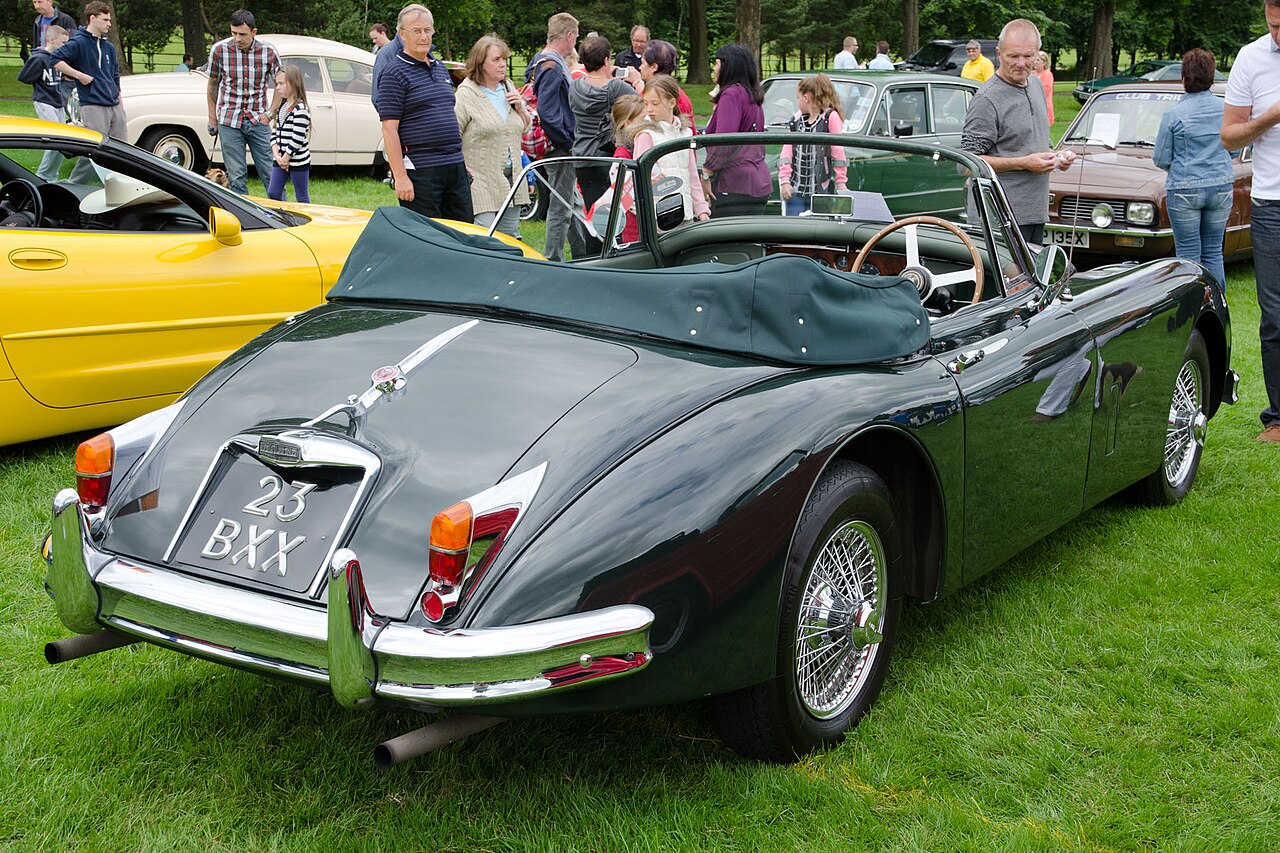He said disc brakes (though you can't have them without pads!) They came out about 1970 for popular cars, maybe high performance jobs had them a bit earlier. So he could be about 70 yo. I'm 74 and I remember working on drums and discs around then.
Jaguar XK150 from 1957 had Dunlop disc brakes. They were used in 1952 on the racing C-type, and Dunlop had made Aircraft disc brakes during WW2. On the XK150 production cars they were considered a marvellous innovation and I believe there was a warning badge on the back to discourage lesser cars from following too close.
I wonder if that's it above the boot-lid handle?



